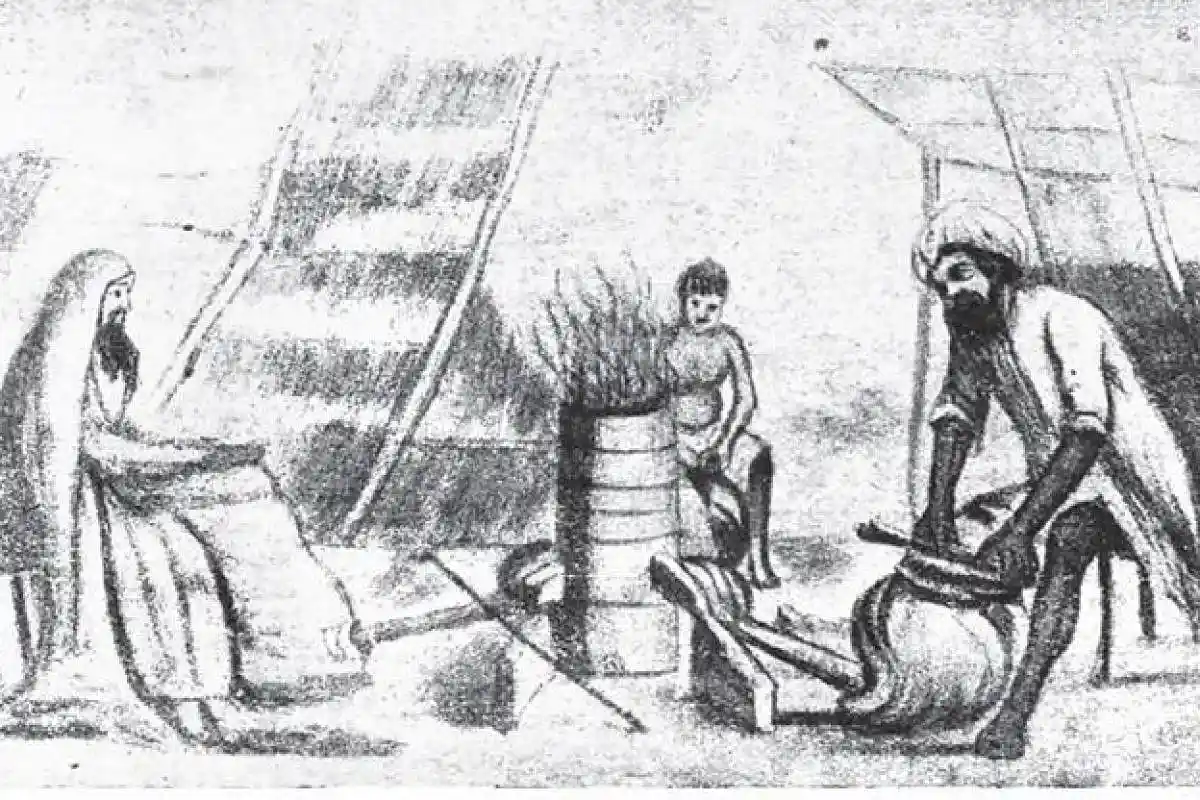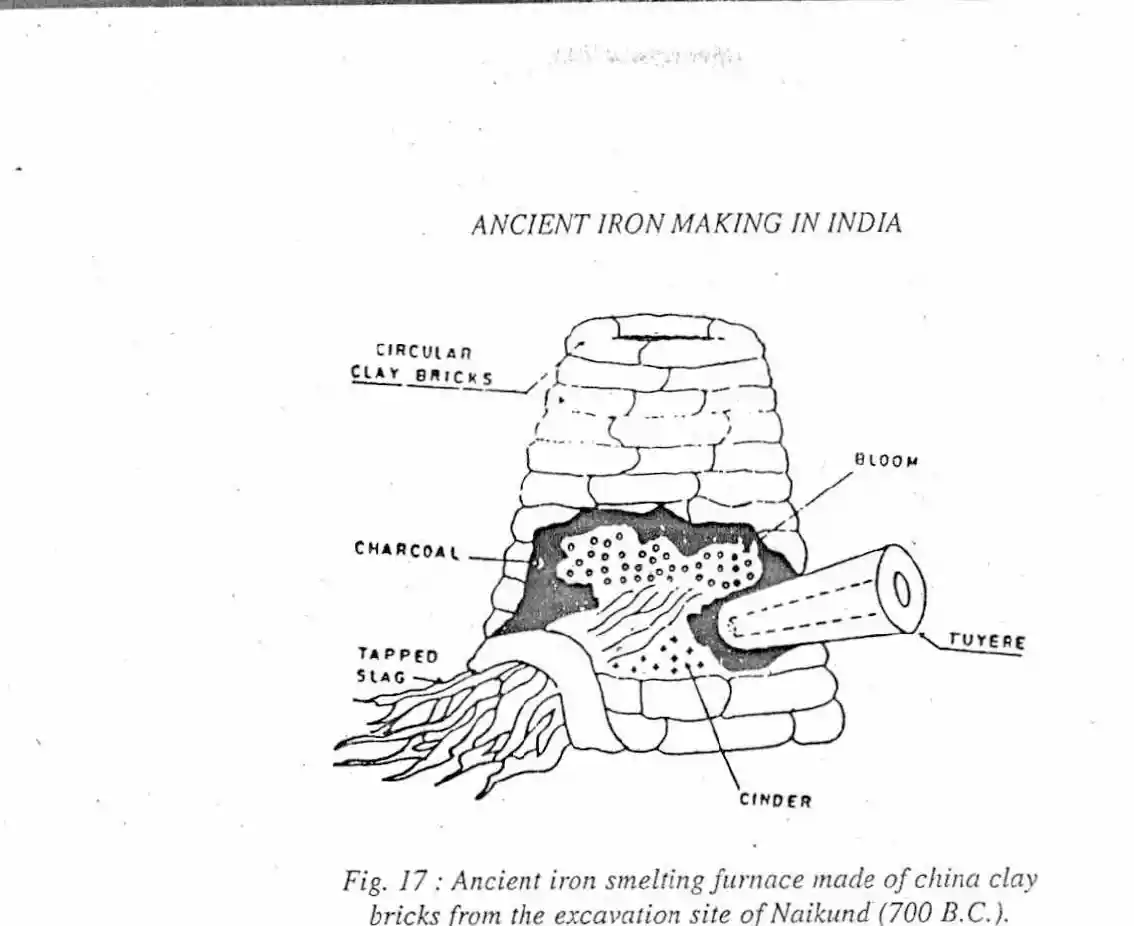The Iron Age Revolution: Ancient India's Path to Progress
Iron in ancient India, has a pretty transformative journey from being a tool to the ingenious "phad" technique to its uses in still noticeable modern steel practices. It revolutionised agriculture, craftsmanship, and warfare, overcoming challenges while leaving an indelible mark on history.

Illustration representing Iron making in ancient India | Source: The New Indian Express
In the heart of ancient India, where the rich tapestry of history weaves tales of innovation and discovery, one of the most pivotal chapters involves the remarkable journey of iron. This humble metal, born from the earth's bosom, emerged as a transformative force that would shape the destiny of an entire civilisation. The story of iron in ancient India is a captivating narrative of ingenuity, challenges, and lasting impact.
The tale of iron in ancient India finds its roots in the primordial fires of the Chota Nagpur Plateau, a sprawling landscape rich in iron ore. It was here that the first sparks of curiosity ignited, as indigenous people began to realise the potential hidden beneath the earth's surface. The earliest practitioners of iron metallurgy in India were a testament to human adaptability, for they discovered a unique method of smelting iron using a clay crucible and a clever application of wind power.
This innovative technique was bestowed with the moniker "phad," which roughly translates to "blowpipe" in the local dialect. The name encapsulated the essence of the process, where a continuous stream of air was blown into the furnace through a pipe, intensifying the heat and facilitating the smelting of iron ore. This inventive approach marked the birth of iron production in ancient India, a watershed moment that would bring about profound changes in agriculture, craftsmanship, and warfare.

Iron Smelting | Source: Semantic Scholar
Before the advent of iron, the people of ancient India relied on traditional bronze and copper tools. While serviceable, these materials had their limitations. The introduction of iron, with its superior hardness and durability, marked a dramatic shift. Iron tools not only made agriculture more efficient, allowing farmers to cultivate larger tracts of land, but also revolutionised craftsmanship, leading to the creation of intricate sculptures, jewellery, and weaponry. The newfound strength of iron transformed warfare, empowering warriors with formidable weapons and armour.
However, like any transformative journey, the path of iron in ancient India was not without its challenges. Iron production, especially in its nascent stages, was a labour-intensive process. The extraction of iron ore, the preparation of clay crucibles, and the relentless operation of bellows demanded considerable effort. Additionally, the scarcity of forests in some regions posed a significant problem, as wood was the primary fuel source for iron smelting. This challenge necessitated the development of efficient charcoal-making techniques.
Nevertheless, the allure of iron and its manifold benefits spurred ancient Indians to overcome these obstacles. Iron production became a thriving industry, and the knowledge of iron smelting gradually spread across the subcontinent. By the time of the Mauryan Empire, iron had firmly established itself as a driving force behind economic and technological advancement.
As the pages of history unfurled, ancient India's tryst with iron would see further innovations. The development of the "bloomery" furnace, an improvement over the earlier phad method, allowed for more efficient iron production. With this advancement, the quantity and quality of iron increased, driving economic growth and infrastructure development.
Despite these remarkable strides, iron production in ancient India also faced ongoing challenges. The most pressing of these was the depletion of forest resources, leading to an acute shortage of wood for fuel. This issue prompted the search for alternative energy sources, eventually resulting in the emergence of wind-powered furnaces. These ingenious devices harnessed the power of the monsoon winds, significantly reducing the environmental impact of iron smelting.
Despite the ingenuity of wind-powered furnaces, the challenges of iron production in ancient India persisted. Issues such as inconsistent iron quality and the labour-intensive nature of the process remained. However, these challenges did not deter the adoption of iron technology. Its indispensability in agriculture, craftsmanship, and warfare continued to drive its popularity.
The spread of iron technology was not confined to the corridors of power; it permeated rural landscapes, transforming the lives of countless farmers. The adoption of iron ploughs, axes, and other agricultural tools brought about a substantial increase in agricultural productivity. As a result, more land could be cultivated, leading to surplus food production and economic prosperity.
Despite the remarkable strides in iron technology, the problems of iron production in India continued to evolve. The issue of inconsistent iron quality persisted, with variations in composition affecting the performance of iron products. Additionally, the depletion of forest resources remained a concern, prompting continued efforts to find sustainable alternatives to charcoal as a fuel source.
Today, the legacy of iron in ancient India endures. Iron is not just a historical artefact but a living testament to human innovation and resilience. India has come a long way since the days of the phad, with modern technology and industrial processes powering its iron and steel industry. Yet, challenges still exist, such as environmental concerns related to iron production and the need for sustainable practices. In the present day, a significant portion of India's population relies on agriculture for their livelihoods, and the adoption of modern iron tools and machinery continues to play a pivotal role in enhancing agricultural productivity. The impact of iron in shaping India's agricultural landscape is immeasurable, and its significance is woven into the fabric of rural life.


